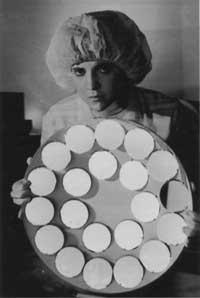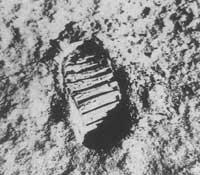Van Allen, James Alfred
1995/08/02 Azkune Mendia, Iñaki - Elhuyar Fundazioa | Kaltzada, Pili - Elhuyar Zientziaren Komunikazioa
(1914)
American physicist born in Mount Pleasant of Iowa in 1914. He went to the university of his hometown where he graduated in 1935. By then it was evident that he liked the research. Even as a student he made the first measurements on cosmic rays. He earned his doctorate in 1939 and has since been head of the physics department at the University of Iowa.
During World War II he designed a new approach system by radio. His invention facilitated the location of the object to be attacked by broadcasting radio waves. As you approach this object, the new weapon can move from location to attack. In the case of explosives, the new Van Allen system increased the efficiency of conventional weapons. At this time he was trained in practical work. He realized the importance of miniaturization in these tasks. The main objective of his research was to facilitate access to small electrical appliances.
At the end of World War II, Van Allen had the opportunity to learn about the V-2 rockets used by the German Army. Besides knowing them, he used them for his research. Van Allen, who wanted to measure the intensity of cosmic rays, introduced the miniaturized apparatus designed by him into the V-2 rockets. When the first results of this research project were obtained, Van Allen disagreed. Their measuring devices detected that cosmic ray radiation was very high, but from a certain level they indicated nothing. Van Allen completed many years to round out the design of the measuring devices and achieved his dream when they launched the satellite "Explorer IV" in 1958. Van Allen postulated that the level of radiation in space was much higher than previously thought. On the other hand, he observed that around the Earth's magnetism field belt structures are generated and noted that the study of the magnetosphere should be fixed on these bases. These radiation structures are now called Van Allen belts in honor of their discoverer.
Van Allen himself laid the groundwork for launching satellites when he began using rockets and balloons in his investigations. In 1955 the US president announced the first release, but they were ahead of the Russian "Sputnik 1". Van Allen never accepted the second stop in the newly initiated satellite race. He was appointed head of the Vanguard project and many of the best physicists of the time gathered around him. This competitive environment that became widespread among scientists launched numerous research, as has been proven later.

Gai honi buruzko eduki gehiago
Elhuyarrek garatutako teknologia





